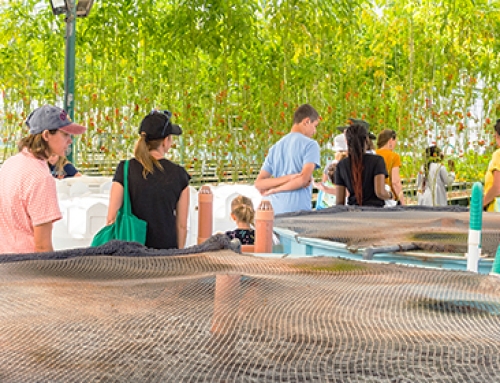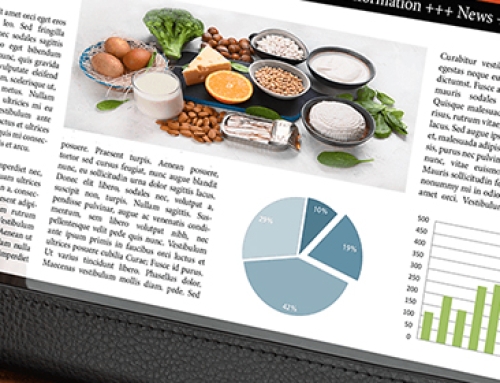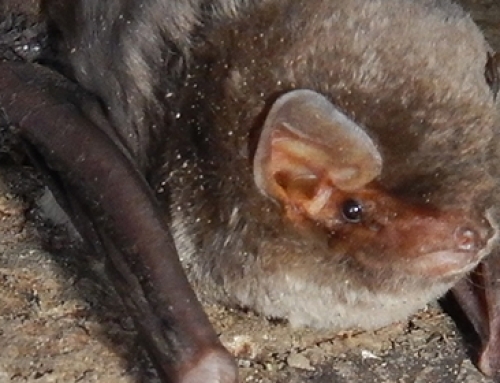Escherichia coli clones infecting or colonizing humans and food-producing animals may circulate among different hosting species and exchange genes codifying for antibiotic-resistance mechanisms. Hence calling for the One Health strategy to survey antibiotic resistance in pathogenic bacteria with harmonized methods and by comparing genomes of isolates from human and animal.
The One Health approach guided the research project granted in 2015 by the Italian National Centre for Disease Prevention and Control (CCM) partnershipping 15 Italian public health institutes, including the Istituto Zooprofilattico Sperimentale delle Venezie (IZSVe). The project results were recently published in the scientific journal, International Journal of Antimicrobial Agents.
Antibiotic-resistant E. coli and public health concerns
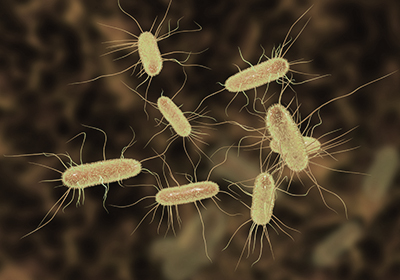
Extended-spectrum beta-lactamases (ESBL) enzymes enable bacteria to resist to different antibiotics, specifically to third- and fourth-generation cephalosporins. Recent years have witnessed rising reporting of ESBL-producing E. coli both in humans and food-producing animals. Thus, scientific research is trying to understand may circulate among different hosting species and exchange genes codifying for antibiotic-resistance mechanisms.
Extended-spectrum beta-lactamases (ESBL) enzymes enable bacteria to resist to different antibiotics, specifically to third- and fourth-generation cephalosporins, which are of importance to cure major human bacterial infections such as Klebsiella pneumoniae and extraintestinal E. coli infections. Since early 2000s, the scientific research has highlighted the progressive spread of certain ESBL-producing E. coli clones – most notably ST131 – that considerably reduced the therapeutic efficacy of both community and hospital acquired infections.
Recent years have also witnessed rising reporting of ESBL-producing E. coli in food-producing animals. Although the ST131 clone is sporadically isolated in food-producing animals, ESBL-encoding genes can be transmitted between E. coli isolates, thus animal isolates may acquire resistance determinants from strains that mostly infect humans.
To date this hypothesis has conflicting scientific evidence with certain studies showing E. coli isolated from humans and animals sharing same ESBL-encoding genes, while others describing differences among genes encoding for ESBL enzymes according to animal species source.
E. coli also harbor genes that activate further mechanisms of antibiotic resistance. Carbapenemase-encoding genes, other than to carbapenems, provide resistance to several antimicrobials used against E. coli resistant to third-generation cephalosporins infections of humans. Further example are genes providing resistance to colistin (mobile colistin resistance, mcr), the nowadays life-saving antibiotic used against bacteria resistant to carbapenems and other antibiotics.
A One Health study on resistant E.coli
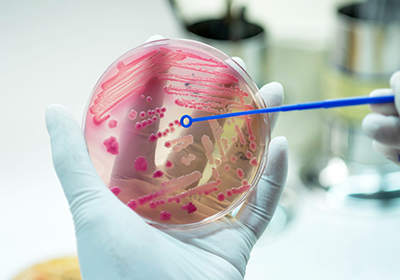
A study on the characteristics of ESBL-producing E. coli isolated in humans and food-producing animals took place between March 2016 and September 2017, in Italy. The study selected 925 isolates of ESBL-producing E. coli identified during routine diagnostic activities, 480 originated from human and 445 from food-producing animals. Isolates were molecularly screened to detect ESBL- and carbapenemase- encoding genes. Then further molecular typed to classify into phylogenetic groups and Multilocus Sequence Typing (MLST) types.
To understand whether food-producing animals contribute to resistance to third- and fourth-generation cephalosporins transmission in bacteria pathogenic to humans, a study on the characteristics of ESBL-producing E. coli isolated in humans and food-producing animals took place between March 2016 and September 2017, in Italy.
The project was a first example of the One Health approach to research on bacterial resistance to antimicrobials in Italy. The laboratories of 12 hospitals and 3 IZSs located in 6 different Italian regions: Friuli Venezia Giulia, Trentino Alto Adige, Veneto, Lombardy, Lazio, and Sicily were involved.
The study selected 925 isolates of ESBL-producing E. coli identified during routine diagnostic activities, 480 originated from human (urine or blood) and 445 from food-producing animals (feces or intestine). Specifically, isolates of animal origin were from cattle (29.4%), pigs (27.0%), and poultry (43.6%).
Isolates were molecularly screened to detect ESBL- and carbapenemase- encoding genes. Then further molecular typed to classify into phylogenetic groups and Multilocus Sequence Typing (MLST) types. Isolates resistant to colistin were investigated for genes mcr-1 to mcr-5.
Molecular screening
One or more ESBL-encoding genes were identified in almost all the isolates (97.7%). CTX-M group genes proved to be more frequent in human than in animal isolates. Specifically, CTX-M-15 was the predominant gene in humans (75.0%) and cattle (51.1%), CTX-M-1 was widespread in pigs (58.3%), while gene CTX-M-15 (36.6%) and other gene types (SHV and CMY-2, 29.9%) were most frequent in poultry isolates.

One or more ESBL-encoding genes were identified in almost all the isolates (97.7%). CTX-M group genes proved to be more frequent in human than in animal isolates. human isolates were prevalently classified in phylogroup B2 (76.5%), and few isolates of animal origin (almost all from poultry) classified in this group (4.3%). Collected data show that the ESBL-producing E. coli colonizing humans and those colonizing food-producing animals are mostly different. However, as other studies show, human and animal clones of E. coli can harbor the same ESBL-encoding genes, suggesting feasibility of exchange of genes encoding resistance mechanisms.
Among ESBL-producing E. coli isolates, 14 (one of animal origin) were also resistant to carbapenems, yet carbapenemase-encoding genes were not detected in any of them, suggesting that resistance mechanisms other than those investigated in the study may have been involved.
Phylogenetic groups and clones
Phylogenetic analysis was used to classify the isolates into 7 different phylogenetic groups (A, B1, B2, C, D, E, F). In line with current scientific knowledge human isolates were prevalently classified in phylogroup B2 (76.5%), and few isolates of animal origin (almost all from poultry) classified in this group (4.3%). Indeed animal isolates belonged to A (35.7%), B1 (26.1%), and C (12.4%) phylogroups.
MLST showed the majority of human origin isolates (83.4%) belonging to the pandemic clone ST131, which frequently carries the CTX-M-15 gene (75.9%). This clone was seldom found in food-producing animal isolates (3 isolates, all from poultry).
Genetic exchanges, an hypothesis to pursue
This study collected data showing that ESBL-producing E. coli isolates capable of extra-intestinal infections in humans and those colonizing food-producing animals are mostly different, supporting current knowledge that ST131 clone is rarely detected in animals. However, as other studies show, human and animal clones of E. coli can harbor the same ESBL-encoding genes, suggesting feasibility of exchange of genes encoding resistance mechanisms among bacterial strains infecting or colonizing different animal species, especially if exposed to strong risk factors, such as imprudent use of antimicrobials. This warrants further scientific investigation and surveillance by public health authorities.
Lastly, 42 isolates of the study were resistant to colistin; 29 (3 from human and 26 from animal matrices) carried mcr-1 gene, located on mobile genetic elements (plasmids), which can be readily shared among different bacteria. One human mcr-1 carrier belonged to the ST131 clone, thus providing sound evidence, on the importance of strict surveillance on colistin resistance.
Read the scientific paper in the International Journal of Antimicrobial Agents »



